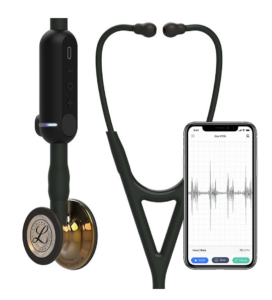How to Perform a Spirometry Test

The following is a basic guide on how to perform spirometry testing in primary care. Please refer to your local guidelines for more detailed information.
1. Ensure that the equipment is ready and in good working order.
Verify this according to the manufacturer’s instructions. These can usually be found in the operator manual or on the manufacturer’s website.
2. Record the patient’s height, age and weight.
If you are using our fully integrated SpiroConnect Spirometer with i3, this information will be retrieved directly from your clinical system and can be amended as required.
3. Ensure the patient is comfortable and explain the procedure.
Make sure the patient is sat down comfortably – ideally in a chair with arms. Explain the procedure to the patient and ensure they have a good seal around the mouthpiece. Advise them not to obstruct the mouthpiece with their teeth or tongue when blowing.
4. Ask the patient to exhale fully and discourage them from leaning forward.
During the test, encourage the patient and try to ensure they exhale fully. Discourage the patient from leaning forward when they blow, as this may compromise the results.
5. Perform VC and FVC.
Carry out VC and FVC, ensuring the patient has sufficient time to recover between each blow. Nose clips should be used for baseline VC but they are not essential for FVC. A minimum of three acceptable blows should be performed for each manoeuvre.
It’s commonly believed that in any one session, there should be a maximum of 8 attempts for a patient. If the patient is unable to achieve the quality criteria then you should record why this has not been possible.
6. Record the results.
If you are using our i3 integrated SpiroConnect Spirometer, you can send the spirometry test results to the patient’s medical record immediately after the test. Otherwise, you will need to import or scan the results manually to your clinical system.
Learn more about our SpiroConnect spirometer
References
1. Spirometry PCRS-UK opinion Sheet Number 1, version 5. 2012. Available at https://www.pcrs-uk.org/resource/Opinion-sheets/spirometry-opinion-sheet
2. A guide to performing quality assured diagnostic spirometry. 2013 Primary Care Commissioning. Available at http://www.pcc-cic.org.uk/article/guide-quality-assured-diagnostic-spirometry
3. Mark L Levy, Philip H Quanjer, Booker Rachel, Brendan G Cooper, Stephen Holmes & Iain R Small. Diagnostic Spirometry in Primary Care: Proposed standards for general practice compliant with American Thoracic Society and European Respiratory
Society recommendations. A Primary Care Respiratory Society UK (PCRS-UK) document, in association with the Association for Respiratory Technology & Physiology (ARTP) and Education for Health. Prim Care Respir J.2009;18:130–147. http://dx.doi.org/10.4104/pcrj.2009.00054
4. Spirometry in COPD Protocol. Primary Care Respiratory Society UK 2010. Available at https://www.pcrs-uk.org/resource/Nurse-tools/pcrs-uk-protocol-spirometry-copd-pdf





